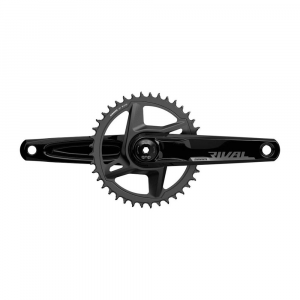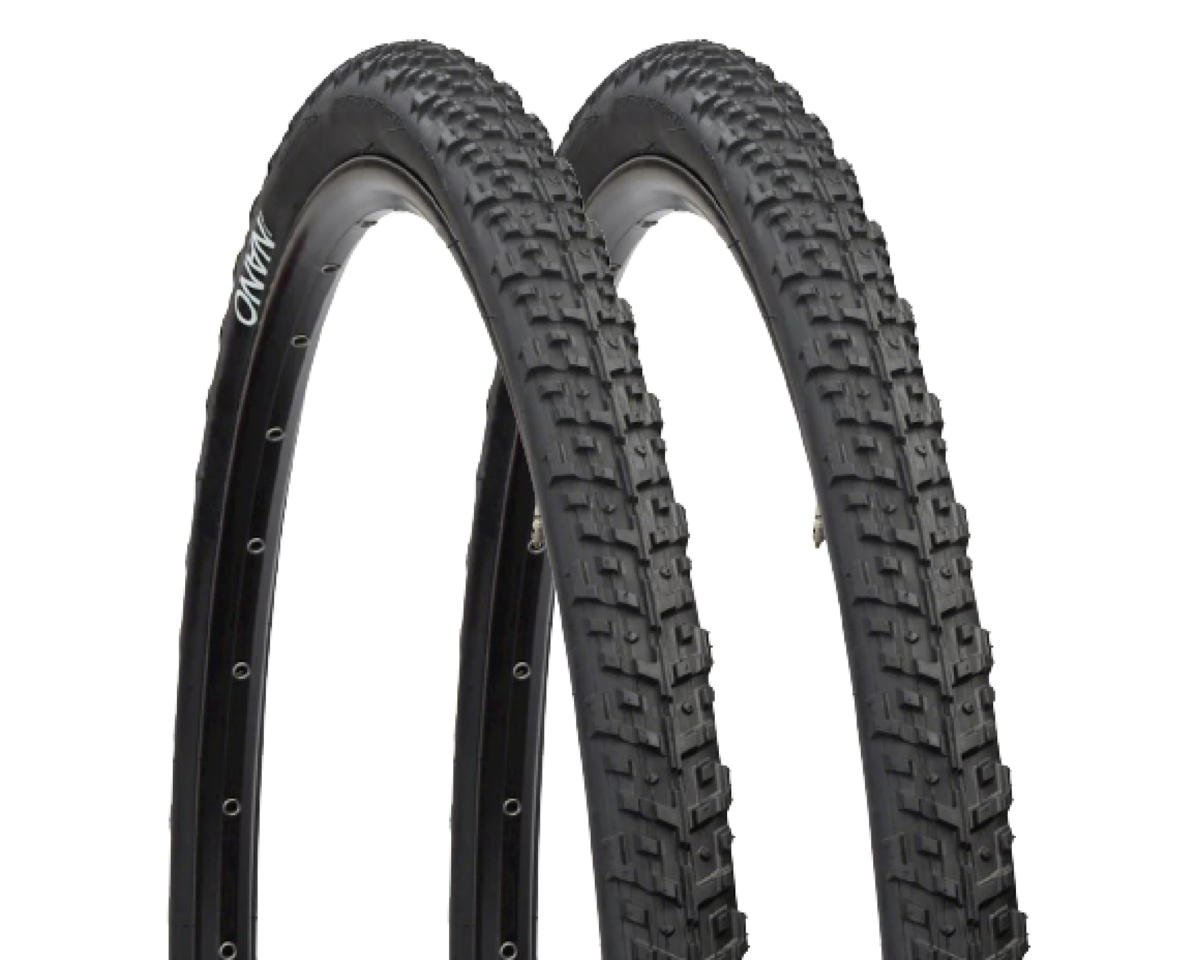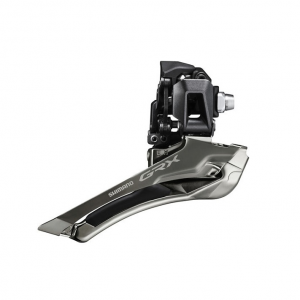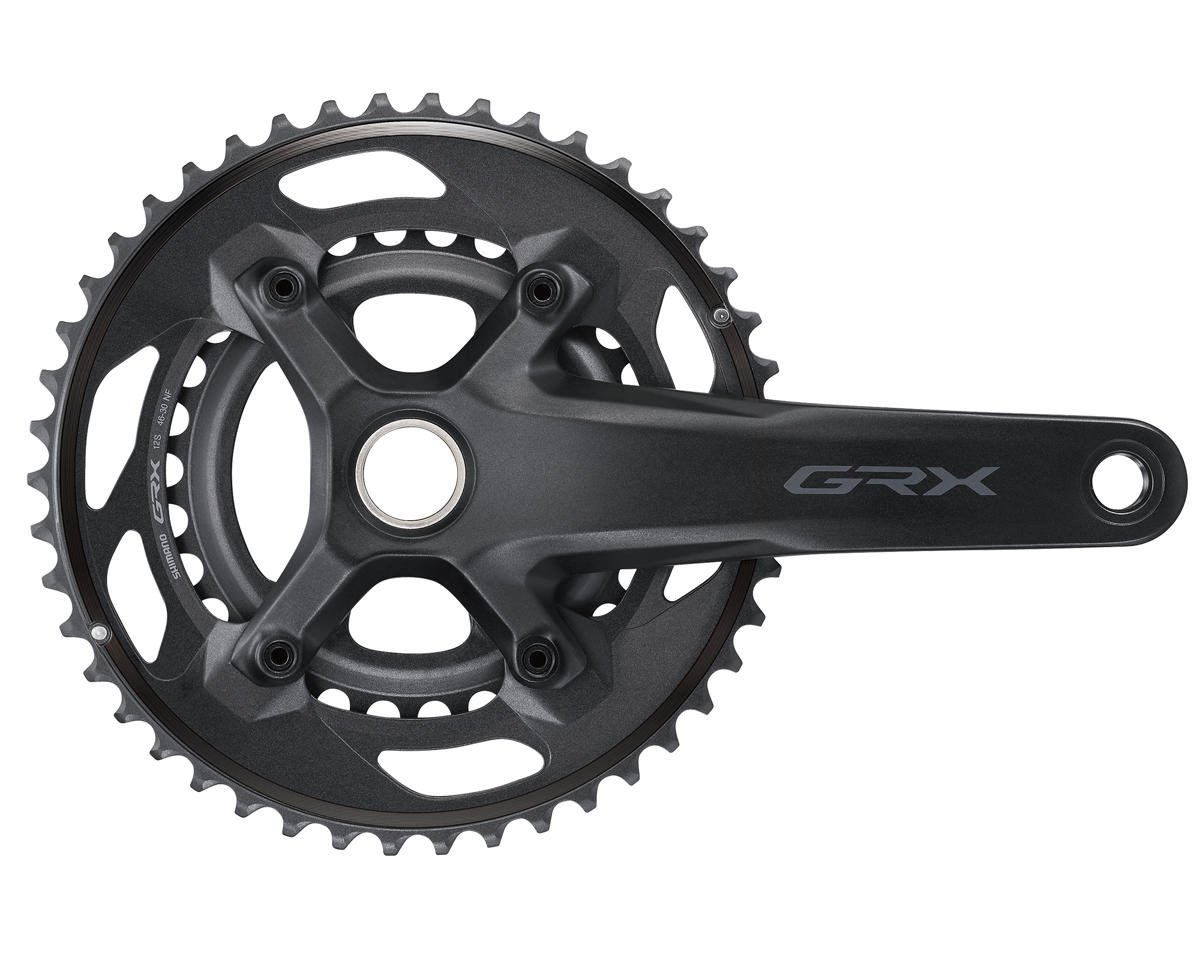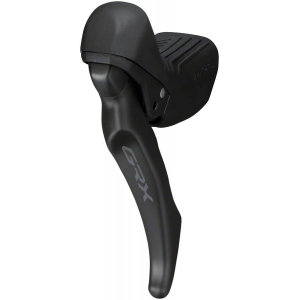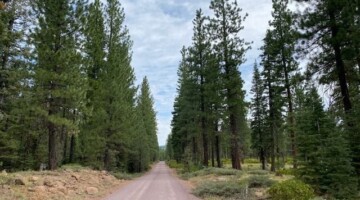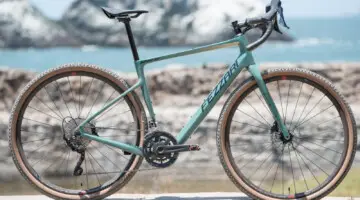At the 2018 Sea Otter Classic, we spent quite a bit of time in the Challenge Tires booth, talking fat tubulars and shedding inner tubes, and inspecting the new bikes of Helen Wyman and Molly Cameron.
While the brand’s fat 40mm Strada Bianca and Dune (to be renamed) tubulars may have captured the most attention on social media, Challenge Tires’ move to embrace tubeless was perhaps even bigger news.
The company’s tagline is “handmade tires” after all, and even though it has offered a vulcanized clincher for many years, its official stance was that its tubulars and open tubulars were superior for all types of low-pressure riding, whether that’s cyclocross, gravel or mountain biking.
Yet the trends are hard to argue with, and with the growth in gravel cycling and the masses of gravel enthusiasts rolling without inner tubes, Challenge finally shed its tubes and unveiled its first tubeless offerings in the form of the Gravel Grinder TLR tires.
We left the show with some of the new tubeless Gravel Grinder clinchers for review, and have our first report of our initial observations and measurements.
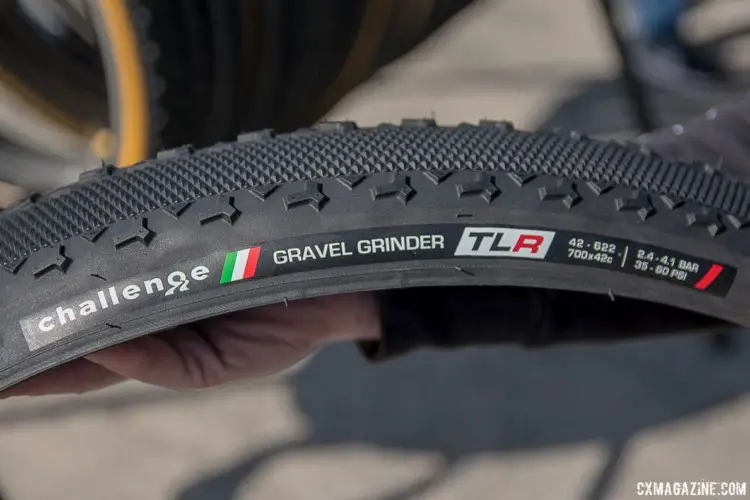
Challenge’s Gravel Grinder will be available in tubeless-ready form, including this new high-volume 42mm option. New Challenge Tubeless-Ready and Tubular Gravel Tires. 2018 Sea Otter Classic. © Cyclocross Magazine
Adding Colors, Reducing Overlap
Challenge has offered its Chicane file tread in oversized form under the Gravel Grinder label for some years, in 33mm, 38mm and 42mm widths of its vulcanized nylon “Race” casing. Moving forward, Challenge will continue offering the 38mm and 42mm non-tubeless options, and even introduce a brown sidewall version of the 42mm version. Just as with Schwalbe, the trendy tanwall will not be tubeless, but at least will be current in terms of the latest fashion trend.
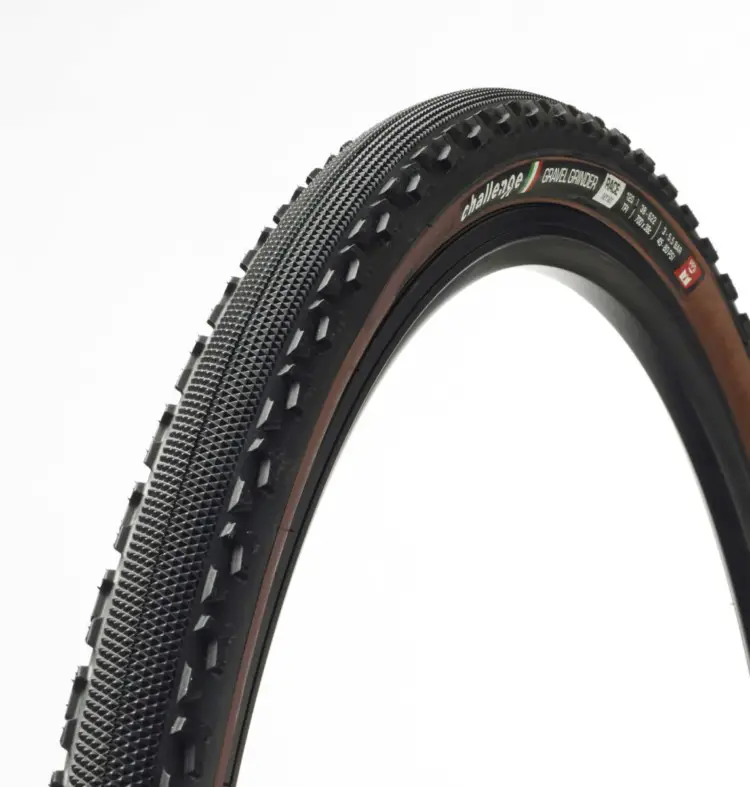
Challenge Tires has spent a good amount of time in the tanning booth, and now offers a dark tanwall non-tubeless version of its Gravel Grinder tire in both 38 and 42mm widths. photo: Challenge Tires
Fans of the 33mm Gravel Grinder should not fret, however. The tire also goes tubeless, but will only be offered the TLR casing under the Chicane name, as Gravel Grinder will refer to widths 38mm and larger. The consolidation should reduce confusion at least, as both the Chicane and Gravel Grinder are currently offered in 33mm Race casings, with a single layer of puncture protection (the Gravel Grinder version is 35g heavier, likely due to a denser rubber compound).
Challenge Gravel Grinder TLR By the Numbers
Compared to the non-tubeless Race versions, the new tubeless TLR casing adds a bit in terms of weight and price. Based on 2019 official specs, the 425g 42mm TLR list weight is just 10g more than the 415g 42mm Gravel Grinder Race (the 375g list weight on the website is incorrect).
Price jumps from $59.99 to $67.99 when you add the TLR tubeless bead and casing.
Our 42mm test tires were close to spec. One weighed exactly 425g, while the other tipped the scales slightly under at 419g. The 38mm versions weighed 340g and 350g, 10g lighter on average than the 355g list weight.
The Gravel Grinder comes in 38mm and 42mm 700c widths, and a 46mm wide 650b version. Of course, the accuracy of list widths of tires vary greatly by manufacturer and rim width, and that’s why we rely on bead-to-bead widths for an apples-to-apples comparison.
The 42mm Challenge Tires Gravel Grinder TLR measures 113mm bead-to-bead brand new. For comparison, that’s identical to the 42mm WTB Resolute TCS Light clincher, 5mm bigger than a 40mm Vittoria TNT Terreno clincher, 11mm smaller than the 50mm Soma Cazadero, and yet just 2mm shy of the 1.95″/50mm CST B-Fast clincher (1mm of bead-to-bead width does not equate to 1mm wider when installed).
On a 21.6mm wide (internal) rim, at just 20 psi, the 42mm tire’s casing measured at a generous 44.2mm wide.
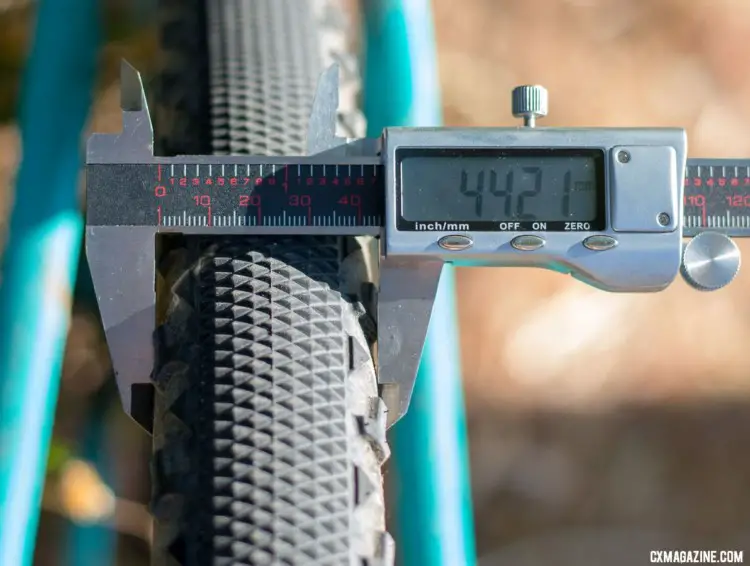
Challenge Tires’ 42mm Gravel Grinder TLR Tubeless tire’s casing measures 44.2mm at 20 psi on a 21.6mm wide rim (internal). © Cyclocross Magazine
The 38mm version appears to be quite a bit smaller and on some rims may be undersized compared to its list width. Bead-to-bead, the tire measures out at just 94mm. On an 18mm wide rim, the 38mm version measured 36.9mm at 25 psi. When inflated on the same 21.6mm wide rim as our 42mm test tires, our math predicts a width that’s closer to 6mm, not 4mm narrower than the 42mm option (we have not installed the two different widths on the same rim, yet).
Challenge TLR Tubeless Installation
Much to our surprise, we first installed the 42mm Challenge Gravel Grinder TLR without tire levers or grunts on a Stan’s NoTubes Grail rim—a typically tight-fitting rim. Keeping the beads in the center channel is key, and your rim’s channel depth will be a big variable in terms of ease of installation. The 38mm version on a Kappius rim presented more of a challenge and had another tester reaching for tire levers.
Seating the tire’s beads was a bit more of a challenge, no pun intended. With a fair amount of lubricant (our current lube of choice is hand sanitizer gel instead of soapy water), the beads required three blasts from a tubeless charging pump to fully seat. The last section seated with a loud snap—typically a good sign that there is a tight fit.
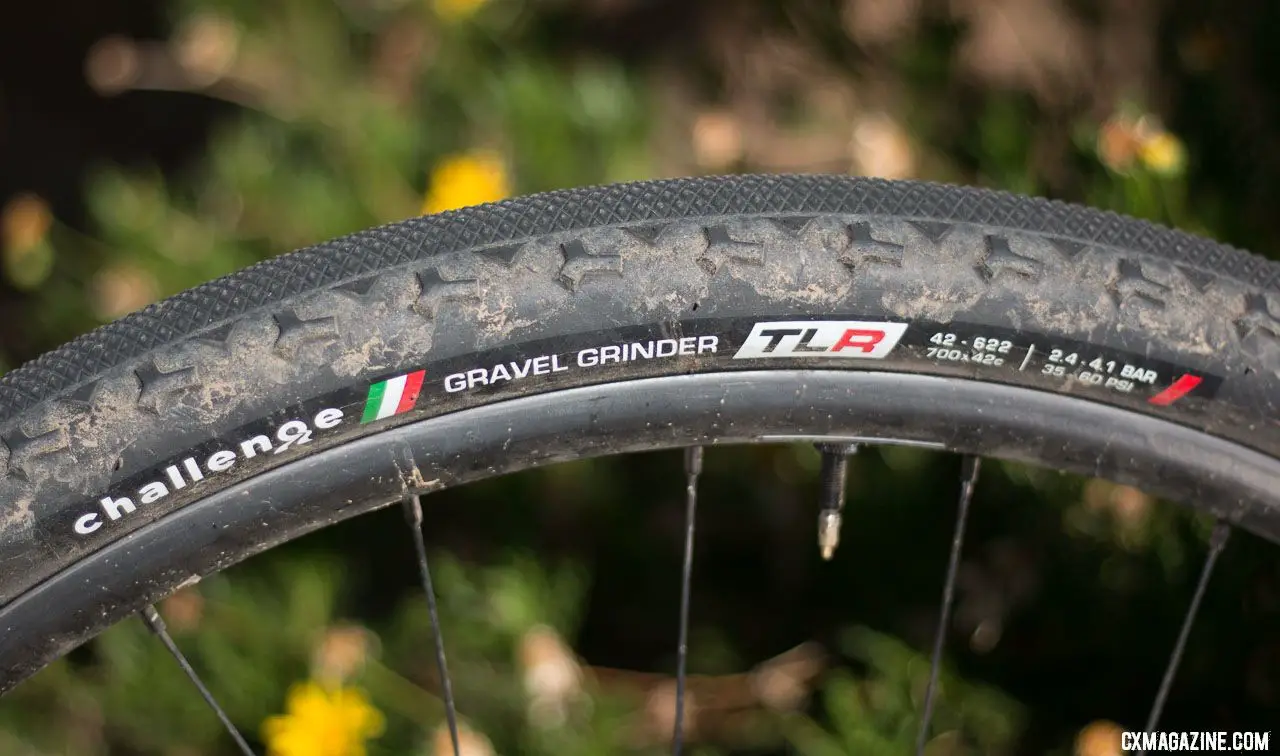
Challenge’s Gravel Grinder TLR Tubeless tire is the company’s first foray into tubeless clinchers, and this airtight model is a good start. © Cyclocross Magazine
Once installed, the Challenge Gravel Grinder TLR, at just 20 psi, easily passed our finger burp test, offering up some confidence for low-pressure riding as we rolled out in search for some gravel.
Grinding Away, On and Off the Road
A tubeless tire’s first job is to remain airtight, and the new tubeless Challenge TLR passed our first tests well. The tire remained burp-free on bumpy, rocky roads and singletrack at pressures down to 16psi, and has held pressure on the NoTubes rim for nearly a week with minimal air pressure loss. While we will be sure to mount the tire on other rims, our initial impressions are that Challenge’s bead and casing are up for the tubeless task.
On the bike, for anyone familiar with the Challenge Chicane and non-tubeless Gravel Grinder tires, the Gravel Grinder TLR offers little surprises.

Challenge’s Gravel Grinder TLR Tubeless tire is fast rolling tread with big, grippy side knobs that take quite a bit of lean to engage. © Cyclocross Magazine
The diamond file tread center is fast rolling on all surfaces, including gravel, dirt and pavement, and when new, offers good grip on hardpack, dirt and even grass. Come cyclocross season, we can will likely reach for the Gravel Grinder TLR for some bumpy, dry, early season races.
At just 422g, the Gravel Grinder is as light as some 33mm cyclocross tires. In your hand, the tire feels quite suppple, and offroad, it feels more supple than the beefy, more reinforced or bigger knob gravel tires that tip the scales at 100g heavier. Challenge didn’t attempt to build the lightest tire, however, and aimed for a mix of suppleness and durability. For example, there are certainly lighter, more supple options out there. For example, the Schwalbe Thunder Burt 29 x 2.1″ weighs just about the same, has a gravel-friendly tread, and measures almost 17mm bigger bead-to-bead (about 6mm bigger when inflated).
The “gravel” term certainly defines different conditions in different locations, and it’s worth noting that the Gravel Grinder file tread doesn’t offer much bite on loose-over-hard surfaces, especially on steep climbs while driving or braking. If you’re on loose gravel climbs, you’ll be rewarded for climbing while seated, but out of the saddle, any surge can turn into tire slip, even at pressures as low as 18 psi.
The large side knobs, inherited from the grippy Limus mud tire, offer plenty of bite on off-cambers and any corners where you can really lean the bike. The tall knobs dig through loose gravel and organic matter when engaged to keep you from sliding out.
There are two quirks with the Gravel Grinder / Chicane tread that are worth noting. At high speed, shallow angle turns on loose gravel, you may not be leaned over enough to fully engage the side knobs, even at low pressures. If you’re comfortable with a bit of one or two-wheel drift, you’ll be fine, but there aren’t many transitional knobs to kick in on loose corners before you really lean it over to get the two rows of side knobs to grab hold. And as many of us have learned the hard way, loose corners are not exactly conducive to safely leaning the bike over.
This may or may not be an issue in your terrain and conditions. Not all gravel rides and gravel cyclists require knobs—Mat Allen and his Soma Vitesse-dressed Medici at Almanzo is proof—but the Gravel Grinder / Chicane tread is a bit bipolar in nature (and partially why Challenge developed the smaller side knob Dune tread for its sponsored cyclocross racers).
Also, as with any sharp-pointed diamond file tread, the center knobs wear quickly. After about 15 miles of pavement across two rides, the center tread shows some noticeable wear. The upside of such wear is you’ll get a faster-rolling tire as the miles add up, but cyclists who tackle a mix of pavement and rocky gravel and want consistent performance over many miles may look towards a tread design with larger knobs.
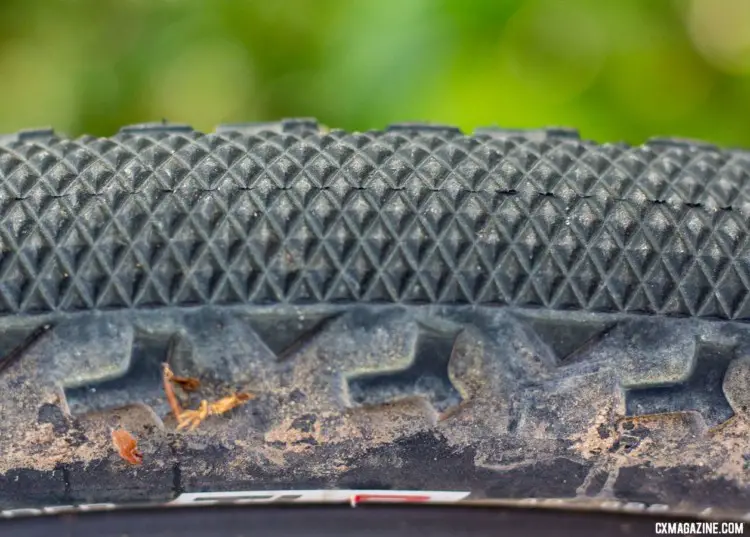
Challenge’s Gravel Grinder TLR Tubeless tire is fast rolling but the sharp-points of the diamond tread are prone to wear. The center knobs show noticeable wear after about 15 miles of pavement in 50 miles of mixed terrain. © Cyclocross Magazine
Challenge is just scratching the surface of its tubeless itch, and we expect the company to offer more treads and widths in the coming months. Based on our initial impressions of the 42mm Gravel Grinder TLR, it’s off to a decent start, and we’re looking forward to seeing tubeless versions of its cyclocross treads soon.
Stay tuned as we complete our long-term test of the Gravel Grinder TLR on other rims and terrain.
Challenge Gravel Grinder TLR 700c x 42mm Tubeless Gravel Tire Specs:
MSRP: $67.99 each
Size: 700c x 42mm, 38mm (650b x 46mm also available)
Width: 42mm: Actual: 44.2mm on 21.6mm internal width rim at 20psi; 38mm: Actual: 36.9mm on 18mm internal width rim at 25 psi
Bead to Bead Width: 42mm: 113mm bead-to-bead; 38mm: 94mm bead-to-bead (why B2B?)
Weight: 42mm: List: 425 grams; Actual: 422g average (419g and 425g); 38mm: 355g list; 345g average (340g and 350g)
Bead: Folding
Casing tpi: Not disclosed
Tubeless: Tubeless-ready
Side Wall: Black wall (brown wall available in non-tubeless Race)
More Info: www.challengetech.it (TLR not yet listed, coming soon)













